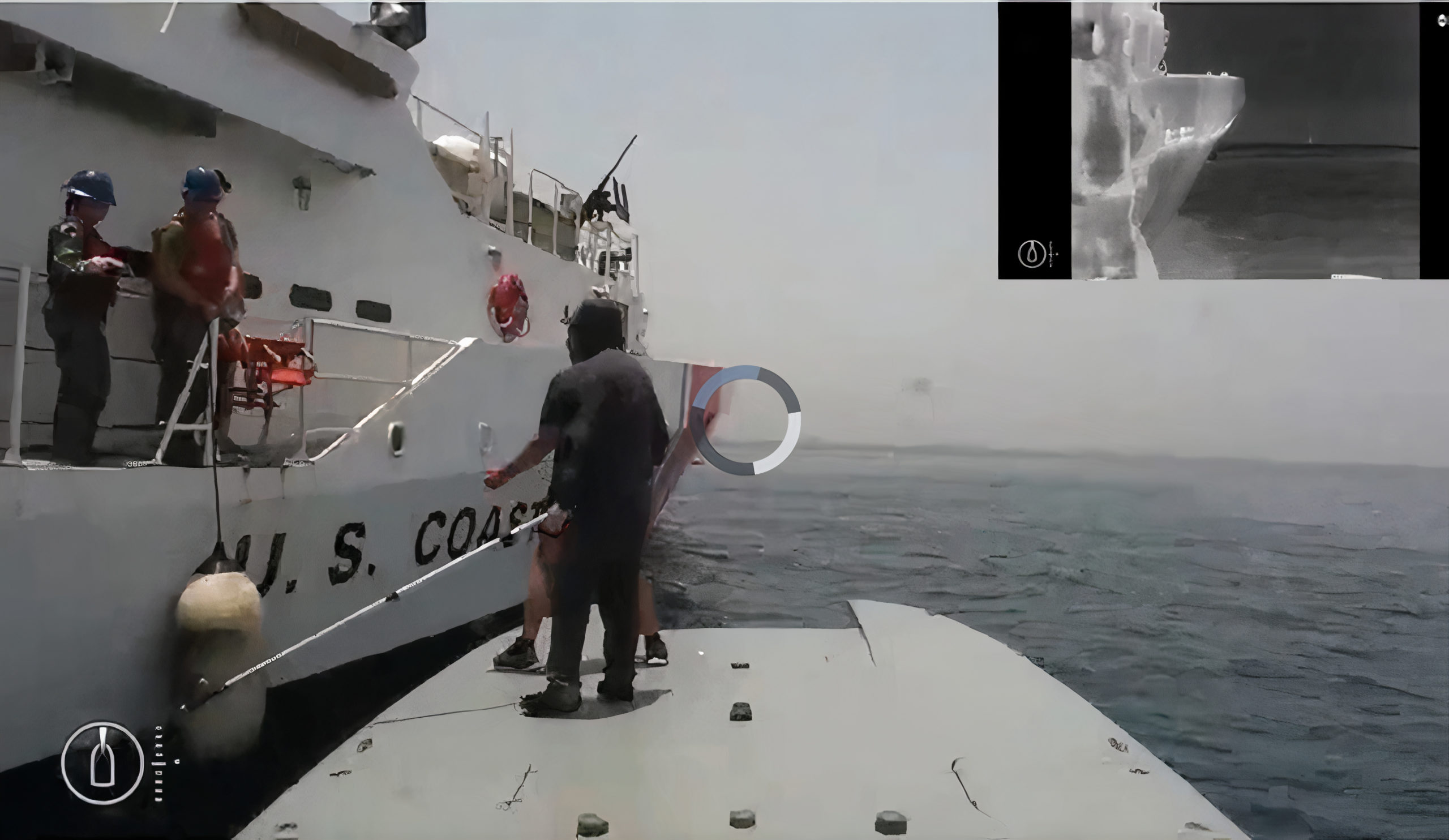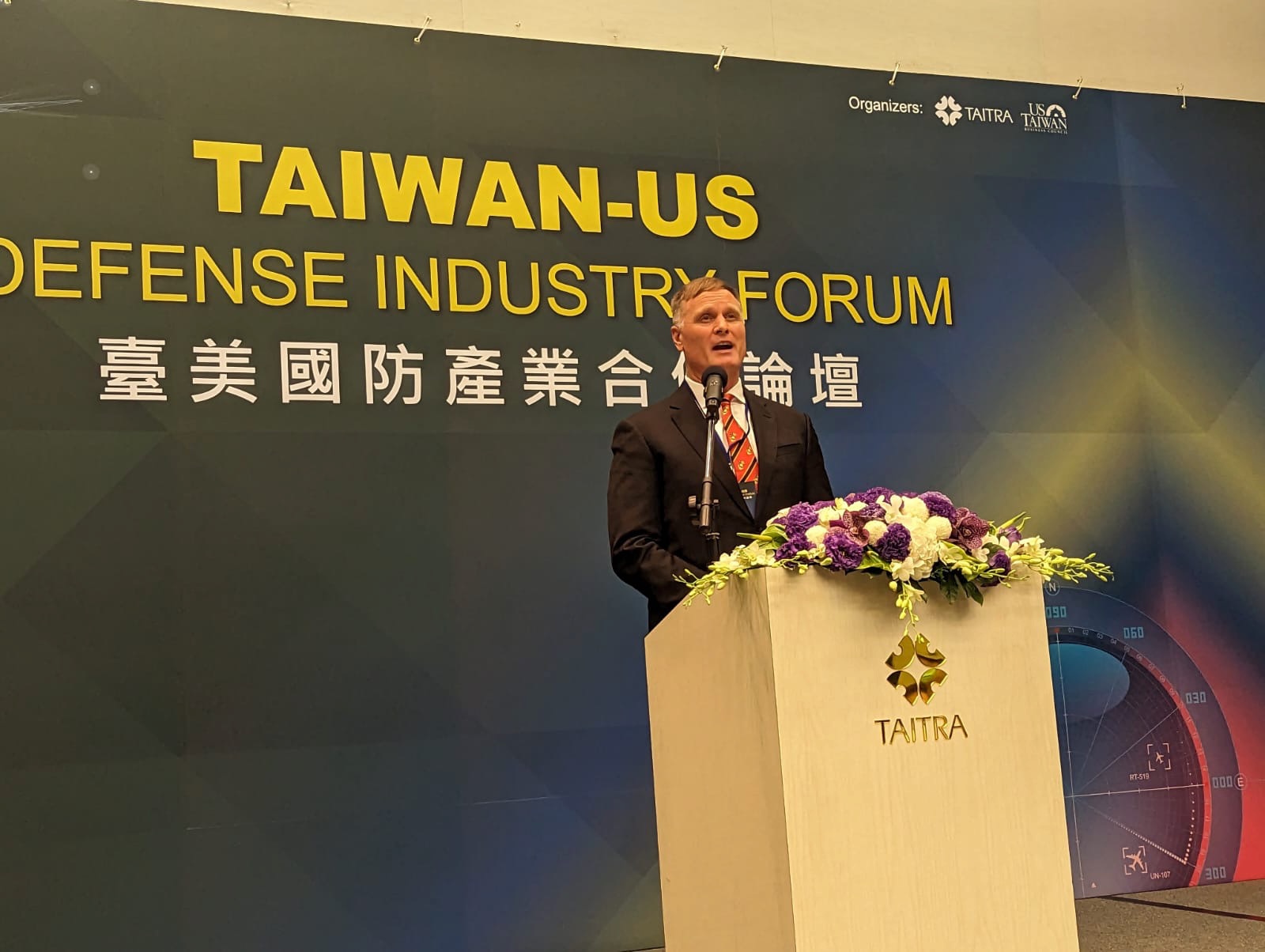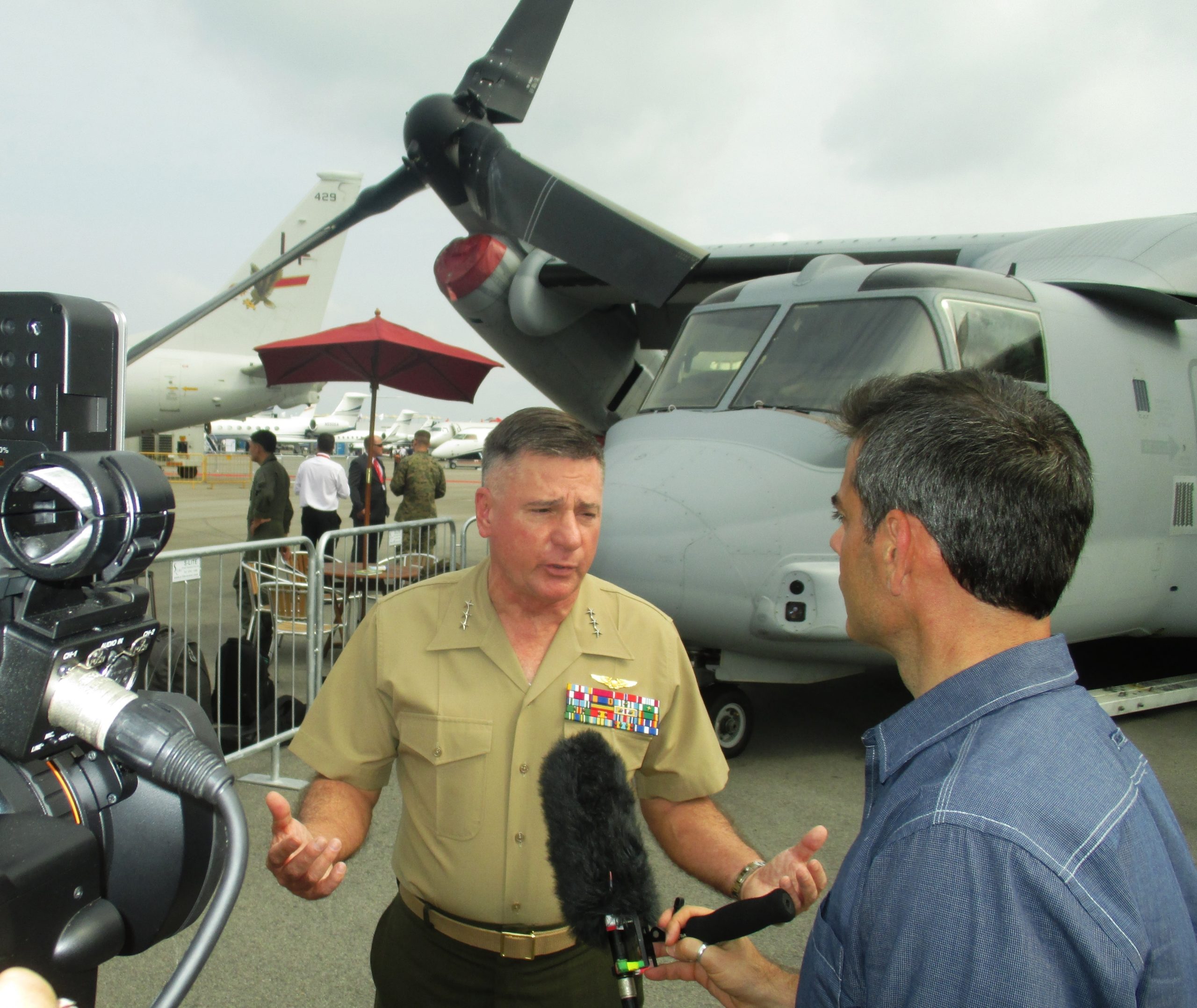According to a 2012 Congressional Research Service Report: “In the fall of 2011, the Obama Administration issued a series of announcements indicating that the United States would be expanding and intensifying its already significant role in the Asia- Pacific, particularly in the southern part of the region. The fundamental goal underpinning the shift is to devote more effort to influencing the development of the Asia-Pacific’s norms and rules, particularly as China emerges as an ever-more influential regional power.”
But given the continued deep involvement in the Middle Eastern land wars, and the stringent defense budgets, how was this going to occur? Part of the answer was provided by new military systems coming to the Pacific, the most notable in the past decade were the coming of a coalition of F-35s and the arrival of the Osprey.
What the Osprey brought to the effort was a unique capability in terms of speed and range and landing flexibility to cover areas of interest for the U.S. military in terms of the insertion of force and of supplies.
In a 2013 interview I did with the MARFORPAC at the time, LtGen Robling underscored why the Osprey was so critical to what the Marines were tasked to do. “Speed, range and presence are crucial to the kind of operations we participate in throughout the Pacific. The Osprey clearly fits perfectly into the types of missions we are tasked to perform.
“To illustrate hypothetically, if we were tasked to counter challenges in the South China sea, such as to bolster defense of Ayungin Shoal, also known internationally as Second Thomas Reef with one of treaty allies, the Philippines, the US has several options, but not all are efficient or even timely. We could use USAF assets, such as a B-2 bombers or B-52 aircraft from Guam, or Navy surface or subsurface assets that are patrolling in the South China Sea, but the location of those assets may not provide timely arrival on station.
“But using the Osprey, we can fly down quickly from Okinawa with a platoon of well-trained Marines or SOF forces, land on difficult terrain or shipping, and perform whatever tasked that may be required in not only a timely but efficient manner.”
LtGen Robling noted the unique qualities provided by tiltrotor and the need in his view for broader acquisition of this capability. “Our allies and others look at what we can do with the Osprey and are impressed. We do not have the strategic lift required to move all my forces around the AOR. Until I can get them, I am required to use C-17s that are very expensive and committed elsewhere or amphibious shipping that there is not enough of, or I contract black bottom shipping, the cost of which as nearly triple in the last five years.
“To compensate, I can use KC-130 aircraft or V-22’s and move small numbers of lethal Marines thousands of miles. Is this efficient? No! Is this effective? Yes! Nobody else has the capability afforded by the V-22 except our USAF SOF forces.”
Eventually allies got the point or at least the Japanese did. And now the U.S. Army has gotten the point and is procuring the V-280 variant of tiltrotor aircraft.
The Marines at the time were pursuing a distributed laydown strategy.
And this strategy requires “an ability to operate from multiple locations allows the Marines to broaden their opportunities and shape more meaningful partnership opportunities.”
And clearly for the Marines, the Osprey is an indispensable capability in so doing. But now the entire joint force and several coalition partners are working to shape a distributed force approach.
As John Conway, the noted Australian strategist put it: “we’ve now got an adversary, who is making us spend more and more money on survivability. We’d rather spend money on lethality, but they’re making us spend money on survivability because they’re becoming increasingly sophisticated, because it’s coming harder and harder to survive. And this is driving up the cost of survivability.”
For the U.S. Navy, the force distribution effort is labelled distributed maritime operations. For the USAF, it is labelled agile combat employment. Such shifts drive up the demand signal for tiltrotor aircraft.
For the Navy, this is evidenced by the acquisition of the CMV-22B.
In an interview I did earlier this year with Vice Admiral Whitesell, the U.S. Navy air boss, he underscored that the shift to distributed maritime operations was a work in progress. As he noted: “We are in an experimentation phase. We are working force distribution and integration. We are experimenting like Nimitz did in the inter-war years. We are working from seabed to space with regard to force integration. It is a work in progress but being successful operating in an environment where logistics are contested, where getting weapons to the fleet in conflict, is not just a nice to have capability — it’s a necessary one.”
What Vice Admiral Whitesell was referring to in terms of contested logistics was the expanded role for the CMV-22B from being a one-for-one legacy replacement for the carrier-onboard-delivery (COD) mission for large deck aircraft carriers to becoming a distributed maritime fleet operations asset.
The Osprey provides an important stimulant for the shift in con-ops whereby the Navy‘s experimentation with distributed operations intersects with the U.S. Air Force’s approach to agile combat employment and the Marine Corps’ renewed interest in Expeditionary Advanced Base Operations (EABO).
In other words, the reshaping of joint and coalition maritime combat operations is underway which focuses upon distributed task forces capable of delivering enhanced lethality and survivability.
The shift to a more distributed force is a strategic one. It will drive not only con-ops but also force development in the near to mid-term. What generally has not been realized is that concept of operations changes are strategic in character and will require significant changes in platform and payload acquisition in the future, new logistical support capabilities, new approaches to sustainment, supply locations and “basing,” as well as fully embracing the autonomous systems revolution to add the expendable, the numerous and the much less costly platform/payload combination.
How do you take the con-ops revolution underway and shape the resulting force into a more enduring one?
How do you supply such a force?
With what do you supply it?
How do you build cross-national production and distribution for the disparate national capabilities and forces?
The thinking from the operational forces needs to drive force design and force development, rather than think tanks and acquisition officials remote from the operating forces.
As payloads change – new weapons, new sensors, new approaches to cloaking forces, new ways to disrupt the adversary’s society and dominate their decision cycles – rapid acquisition is required.
How rapidly can the acquisition system and its slow-paced process of development be put aside to do so.
The changes occurring in Pacific operations are dramatic; the recognition of the impacts of these changes has not been. The Osprey came as the pivot to the Pacific began. Now tiltrotor is key enabling capability for the strategic shift to force distribution and payload dynamic innovations. Force distribution is enabled by the speed and range of the tiltrotor aircraft able to land on a wide variety of locations.
And the flexibility of the aircraft to carry a wide variety of payloads makes it a center piece of the con-ops revolution under way. The flexibility which the Osprey provides – with the USMC, the U.S. Navy and the USAF operating the aircraft – opens the aperture significantly on how one configures the aircraft to deliver what payload in which situation for which combat and deterrent effect.
Colonel Marvel, the CO of MAG-39, located at Camp Pendleton underscored in an interview I did with him in February 2023 “The Osprey provides unique speed and range combinations with an aircraft which can land vertically. It is a very flexible aircraft which could be described as a mission-kitable aircraft. The Osprey has big hollow space in the rear of the aircraft that can hold a variety of mission kits dependent on the mission which you want the aircraft to support.”
He emphasized that with a variety of roll-on roll-off capabilities with different payloads. “We can add the specialists in the use of a particular payload along with the payload itself to operate that payload, whether kinetic or non-kinetic, whether it is a passive or active sensor payload. We need to stop thinking about having to put the command of such payloads under the glass in the cockpit, and control those payloads with a tablet.”
Col Marvel underscored that the Marines when deployed are engaged in presence missions. How then best to use their presence to deliver the desired effect? And given the Marines are operating across the spectrum of warfare, and that spectrum itself is changing, which payloads are most relevant to the mission? This means that “we need to maximize the payload utility of our platforms.”
He provided a number of examples of different payloads which they are working with from USVs to a variety of passive and active sensors. Kill webs need to be sustained and Ospreys can provide both fuel and ordinance to platforms throughout the extended battlespace. For example, Ospreys can bring fuel and ordinance to a FARP (forward arming and refueling point) and support P-8 operations, for example. Ospreys can palatize torpedoes and engage them in the battlespace. They can provide key parts of the network of sensors that make a distributed forces’ domain C2 and fires control picture. With the proper payload, Ospreys can maintain contact with surface and subsurface forces to help build a common tactical operating picture.
But this is just the beginning.
With the innovations already underway with USVs, one can credibly envisage in the near to midterm and Osprey landing on an austere location with payloads for the USVs. The USVs then arriving at the austere location and the Ospreys and USVs operating together in that location for the desired time, and in which the Marines who landed with the Osprey operating the range of payloads which they brought with them with the USVs.
With the U.S. Army now acquiring the V-280, there are clearly expanding opportunities for enhancing force distribution. And with the Army’s many working relationships with core allies in the region, the tiltrotor force could expand exponentially and with it the capabilities to operate a distributed force. And when one crosses tiltrotor with the autonomous revolution, there is a capabilities dynamic which can redefine what the multi-domain force can achieve.
It began as a pivot to the Pacific. Now it is becoming a con-ops revolution.
Featured Photo: Lt. Gen. Terry G. Robling is interviewed by Al Jazeera news in front of the MV-22B Osprey static display Feb. 12, 2014 at the Changi Exhibition Center in Singapore. The static display is a part of the Singapore International Airshow 2014 and is one of 96 aircraft on display at the airshow. Robling is the commander of Marine Forces Pacific and the Osprey is with Marine Medium Tiltrotor Squadron 262, Marine Aircraft Group 36, 1st Marine Aircraft Wing, III Marine Expeditionary Force. The Osprey is with VMM-262. (U.S. Marine Corps photo by Capt. Caleb D. Eames/Released).
For our new book which examines the role of the Osprey in the pivot to the Pacific, see the following:





